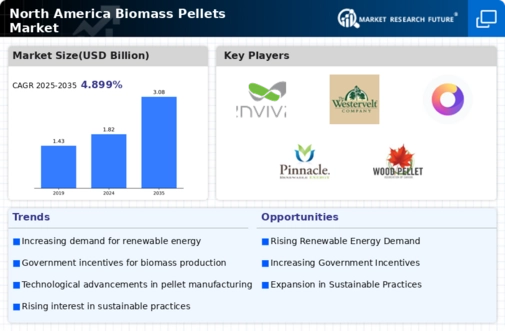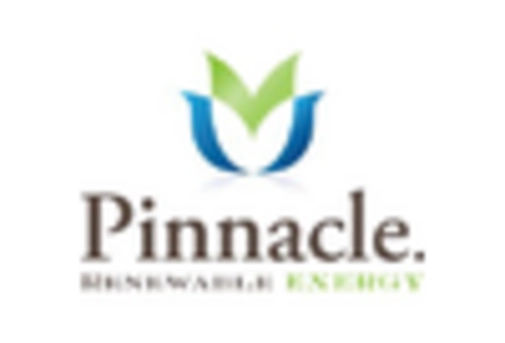The North America Biomass Pellets Market is characterized by a diverse competitive landscape where several players are striving to enhance their market presence and capture an expanding demand for renewable energy sources. Companies within this market focus on producing high-quality biomass pellets derived from wood residues, agricultural waste, and other organic materials. The rising awareness regarding sustainable energy practices, coupled with regulatory support for renewable energy, is driving investment and innovation among market players. As such, understanding the dynamics of competition in this market is crucial for stakeholders aiming to develop strategic initiatives to maintain or gain market share.
The competition varies by factors such as production capacity, distribution networks, technological advancements, and customer relationships, all of which significantly influence market positioning.Enviva stands out in the North America Biomass Pellets Market with its extensive production capability and a well-established supply chain. The company has positioned itself as a leading producer and supplier of wood pellets, primarily aimed at both domestic and international markets. Featuring a strong commitment to sustainability, Enviva focuses on sourcing wood materials sustainably while also emphasizing efficiency in its production processes.
One of the strengths of Enviva is its vertically integrated supply chain, which allows it to have greater control over its manufacturing processes and quality assurance, thus resulting in a reliable product for customers. The company also engages in strategic partnerships and collaborations to enhance its operational efficacy and expand its influence across the North American region.Westervelt has developed a robust presence in the North American Biomass Pellets Market, known for its commitment to sustainable forest management and environmental stewardship. The company’s key products include high-quality wood pellets, which are primarily utilized for energy generation.
Westervelt is recognized for its strong operational capabilities, which enable it to cater to both industrial and residential markets effectively. With a focus on innovation and sustainability, Westervelt has successfully adapted to market demands and has explored various growth opportunities, including strategic mergers and acquisitions to enhance its portfolio and expand its market reach. The company's commitment to providing eco-friendly energy solutions and its solid reputation in sustainable forestry practices further bolster its strengths in this competitive market landscape in North America.
















Leave a Comment